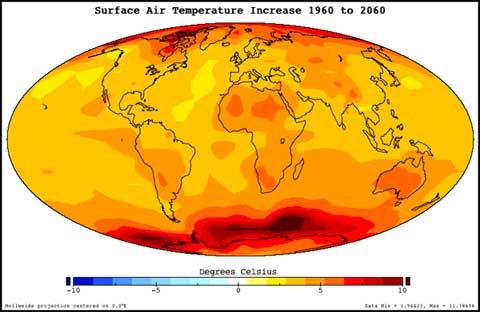Climate change and global warming have been very active topics in recent news and politics. How could we possibly know that the earth is warming, given that we've only been recording atmospheric temperatures for a reasonably short period of time? Using what we've been able to discover about temperature and carbon dioxide levels in the past (experimental evidence) in combination with what we know about sunlight, heat, and the properties of our atmosphere (theory), we are able to create simulators to predict what sorts of temperature trends we will likely see in the future.
NASA built one of the most well-known simulators for climate modeling, called the GCM (Global Climate Model). To quote from NASA's website, "A GCM calculates many things, such as how much sunlight is reflected and absorbed by Earth's atmosphere, the temperature of the air and oceans, the distribution of clouds, rainfall, and snow, and what may happen to the polar ice caps in the future."
These simulations also allow for the adjustment of variables, like the quantity of CO2 in the air. Many of the results that have been announced about policy recommendations have stemmed from an understanding of how much we'd have to change, which is data that can only be gathered through simulation. Simulation is hugely helpful in situations like this where we understand many of the subproblems reasonably well (for example, how sunlight reacts when it hits clouds, dense air, or land), but are unable to directly test various routes or solutions to see how they would prevent a particular outcome. 
